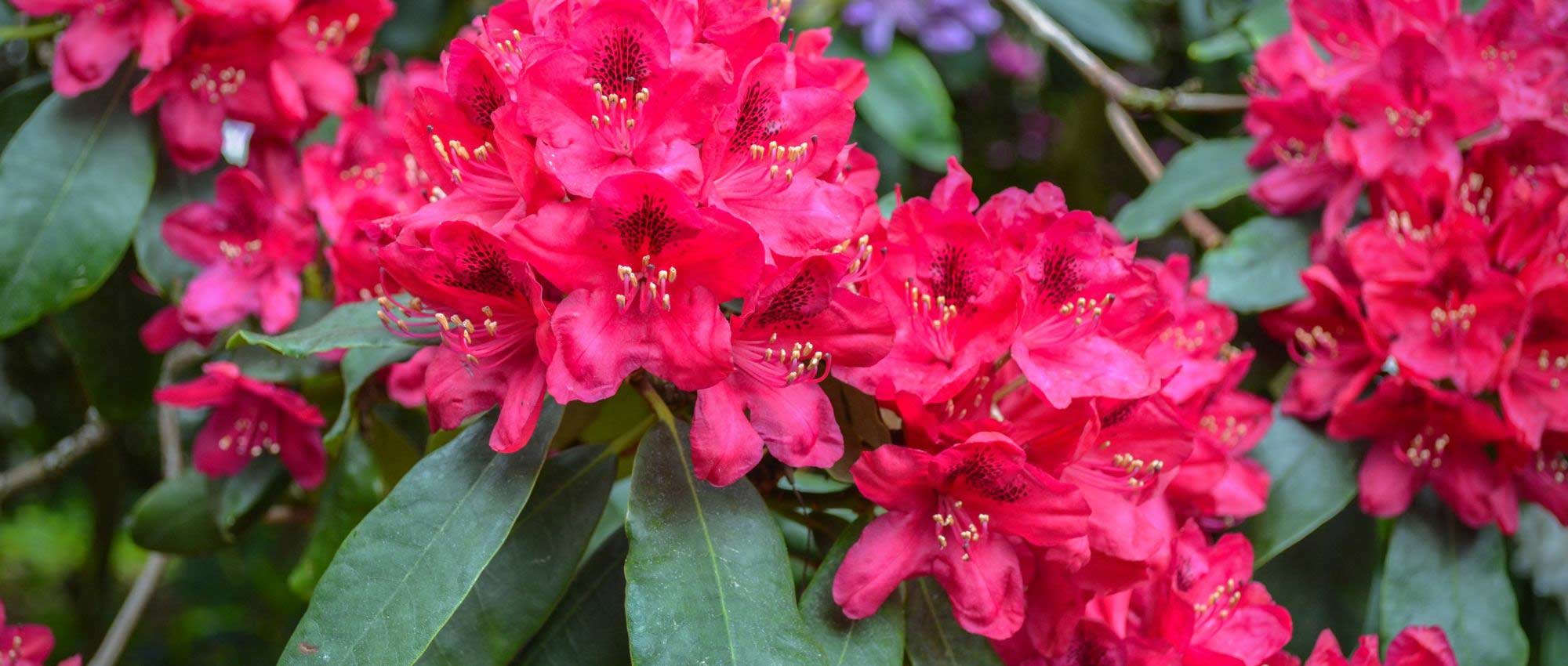
Rhododendrons: how to grow them in pots?
Our tips for choosing, planting and caring for them!
Contents
Rhododendrons are heather soil bushes that offer a generous spring flowering and foliage generally evergreen and dark green. They flower between March and June, depending on variety, and produce flowers in bright, colourful hues: red, pink, mauve, orange, white, yellow…
Smaller varieties are well suited to growing in a pot, which allows you to grow them on a simple terrace, a patio, in an inner courtyard and even on a balcony. Planting in a pot is also a good solution if your soil is calcareous: rhododendrons are indeed sensitive to this type of substrate, which causes chlorosis (yellowing of foliage).
Here is everything you need to know to properly plant and to grow a rhododendron in a pot!
Which rhododendron to choose for growing in a pot?
To grow a rhododendron in a pot, opt for a variety with a compact habit (up to 1 m high, or 1.5 m at most).
Indeed, larger rhododendrons are not suitable and would quickly feel cramped, and they are harder to handle (for repotting, moving the pot if needed, etc.). Fortunately, rhododendrons include many modest-sized varieties!
We particularly recommend the rhododendron ‘Bloombux’, which offers lovely small pale-pink flowers gathered in rounded panicles. It forms a bush with a dense, compact habit, not exceeding 1 m in height. In addition, it is relatively tolerant of sun and lime! You can also choose rhododendron ‘Moerheim’, with violet–mauve flowers and green foliage that takes on a bronze tint in winter. For white flowering, opt for ‘Dora Amateis’, which produces countless pure-white flowers in April–May, very elegant. To enjoy a more vivid, colourful flowering, we recommend Japanese azaleas ‘Johanna’ or ‘Hino‑Crimson’, which bear bright red flowers in spring! If you would like more information and advice on choosing your rhododendron, see our dedicated page: “Which Rhododendron to choose?”
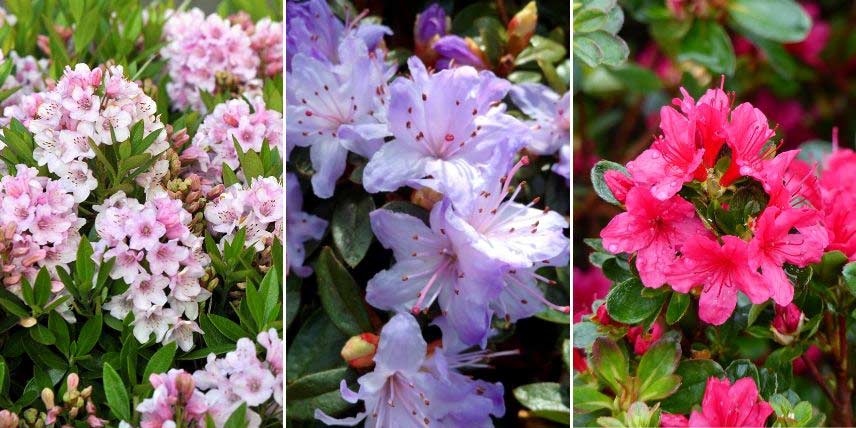
Some examples of rhododendrons with a compact habit that easily adapt to growing in a pot: Rhododendron ‘Bloombux’, Rhododendron ‘Moerheim’ and Japanese azalea ‘Hino‑Crimson’
When should you plant a rhododendron in a pot?
The two most favourable times to plant rhododendron are autumn (September-October) and spring (April). Avoid periods of frost or extreme heat.
Discover other Rhododendron and Azalea
View all →Available in 1 sizes
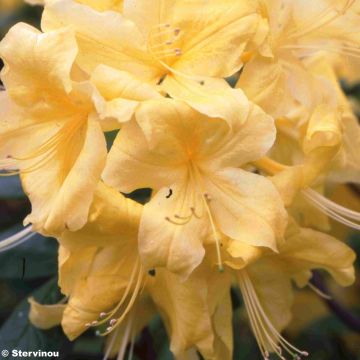
Available in 1 sizes
Available in 1 sizes
Available in 3 sizes
Available in 1 sizes
Available in 1 sizes
Available in 1 sizes
Available in 1 sizes
Available in 1 sizes
Available in 1 sizes
How to plant a rhododendron in a pot or planter?
To plant your rhododendron in a pot :
- Start by choosing a pot or container suited to size of Rhododendron you are going to plant. Ideally, pot should measure at least 40 cm in width, but this also depends on variety you are growing and its age at planting. It is important that base of the container is pierced to allow water to drain.
- Place a drainage layer at bottom of pot, made of clay pebbles or gravel.
- Install the substrate : use for example a mix of heather soil, well-rotted compost and garden soil (which you can replace with potting compost if your soil is chalky!). The important thing is to obtain a light, well-draining and acidic substrate.
- Plant your rhododendron avoiding burying the collar! The collar should be at same level as in previous pot, or possibly a little raised.
- Backfill by adding substrate all around, and firm down lightly.
- Water generously.
- Place the pot in a sheltered, semi-shaded but still bright spot, ideally protected from wind.
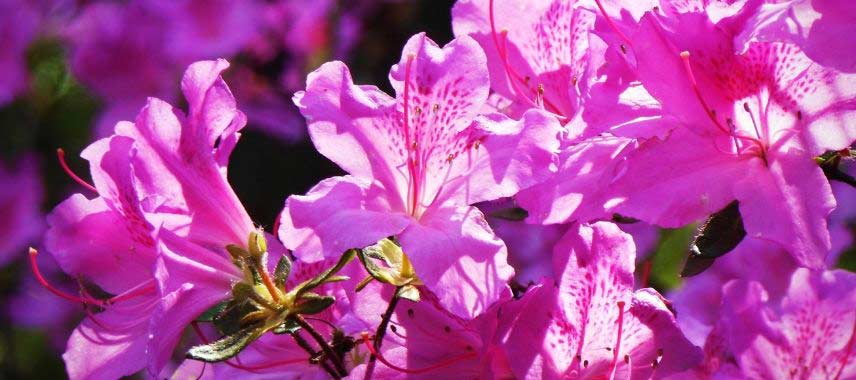
Read also
Rhododendron: planting, growing and careHow to care for a rhododendron in a pot?
When grown in a pot, water regularly throughout year. Water with rainwater if possible, as mains water may be too hard for rhododendron. Feel free to add a small layer of mulch on surface so substrate stays cool for longer. You can use, for example, fine pine bark.
In spring, you can apply a little fertiliser for ericaceous plants. Avoid in all cases fertilisers too rich in nitrogen, which could harm flowering.
Once flowering is over, we recommend removing spent flowers. Besides the aesthetic benefit, this helps the plant.
Where possible, it is preferable not to prune the rhododendron, unless it has dead or damaged branches, or is taking up too much space (you can then prune it to limit growth). If you must intervene, carry out a light pruning once flowering has finished. Rhododendrons can take a long time to flower again after pruning.
Repot your rhododendron at least once every two years, preferably in autumn. Each time choose a pot slightly larger than previous. If your rhododendron is already in a large pot, limit yourself to top-dressing: remove some substrate by scratching the surface to a depth of a few centimetres, then replace with fresh potting compost.
If leaves of your rhododendron discolour and turn yellow, this indicates the bush is suffering from chlorosis. This problem appears when grown in too calcareous substrate, or when watered with hard water (prefer rainwater rather than mains water). You can repot your rhododendron in a mix of potting compost and heather soil.
If leaves of your rhododendron turn brown, this is due to a drainage problem. Moisture stagnates around roots and causes them to rot. Check underside of pot that there are holes to allow water to drain away. It is also important to install a drainage layer at bottom of pot, made of clay pebbles or gravel. Likewise, at planting time you can add some coarse sand to substrate.
- Subscribe!
- Contents
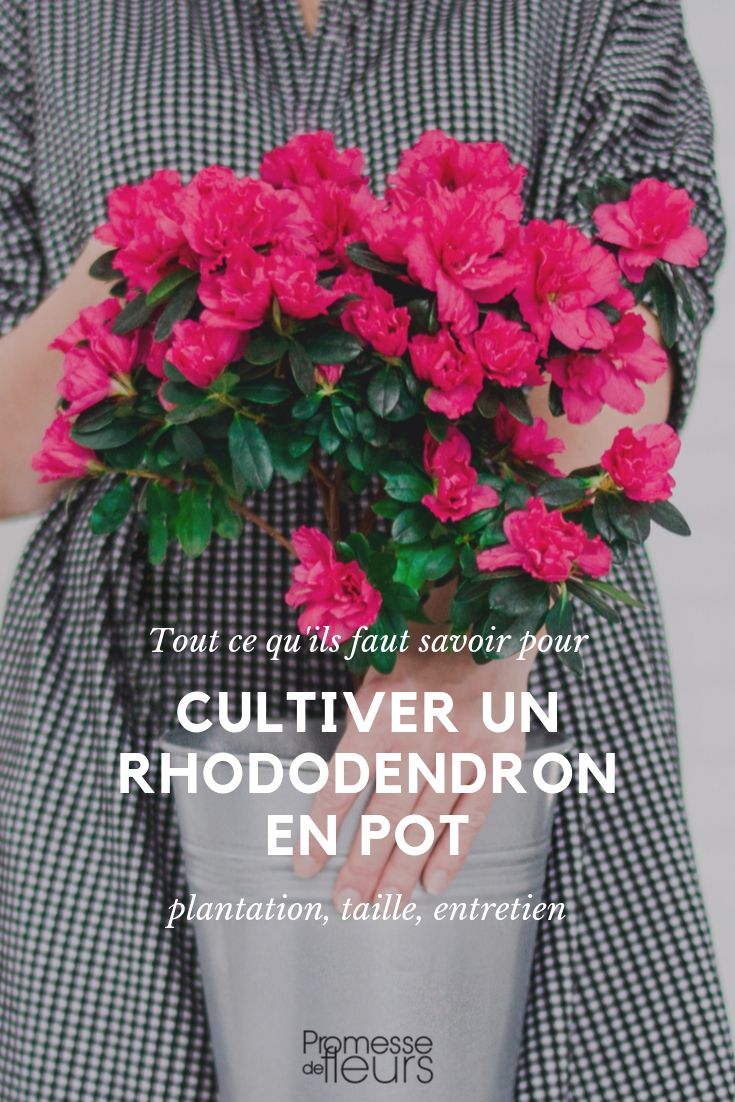































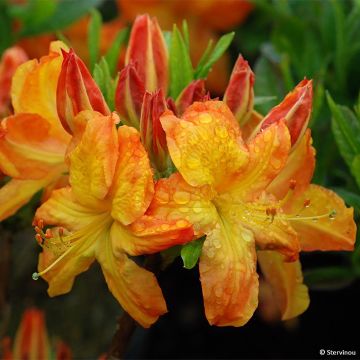

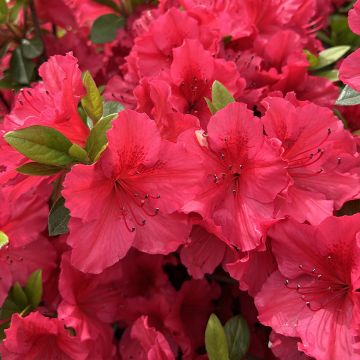

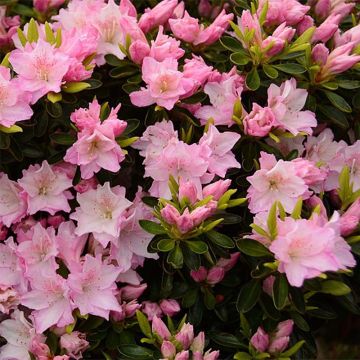

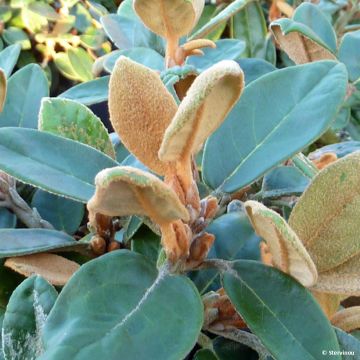
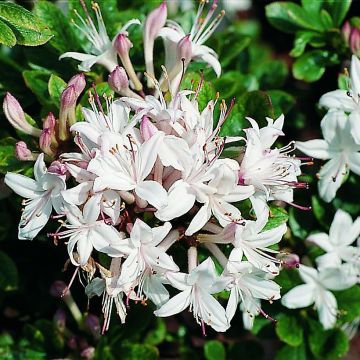
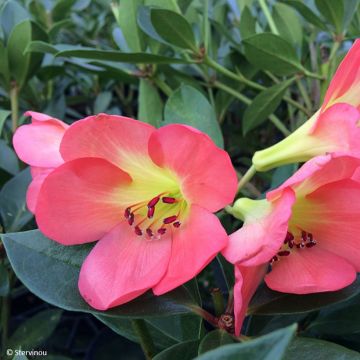
Comments